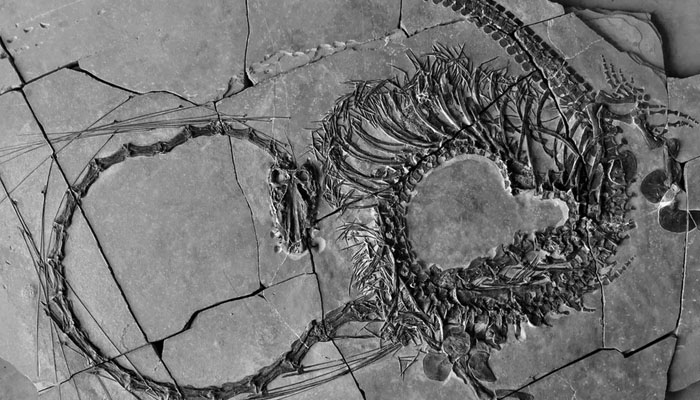Dinocephalosaurus: Weird fossil of 240-million-year-old 'dragon' rocks scientists
Dinocephalosaurus orientalis, a 240-million-year-old fossil "dragon" is said to have first recognised in 2023
A new, astonishingly intact fossil of a 16-foot (5-metre) aquatic reptile from the Triassic epoch has been discovered by scientists.
Due to its incredibly long neck, the 240 million-year-old creature has been referred to as a "dragon", according to BBC.
It is a species known as Dinocephalosaurus orientalis, which was first recognised in 2003.
Scientists can now view this strange prehistoric beast's entire anatomy thanks to this amazing new fossil.
As a member of the international team that examined the fossil, Dr Nick Fraser from National Museums Scotland remarked that this was the first time that scientists had been able to view it in its entirety. "A very strange animal" was how he put it.
"It had flipper-like limbs and its neck is longer than its body and tail combined," he said.
With its 32 distinct vertebrae, the researcher hypothesised that Dinocephalosaurus orientalis's "long, bendy and flexible neck" may have given it a hunting edge by enabling it to look for food in underwater cracks.
The fossil was found in southern China's old limestone formations.
"This discovery just adds to the weirdness of the Triassic," Dr Fraser told BBC. "And every time we look in these deposits, we find something new."
Additionally, the journal Earth and Environmental Science: Transactions of the Royal Society of Edinburgh published the study that describes a new collection of the animal's fossils.
-
FBI’s most wanted caught after 10 years in Mexico
-
UK Starmer rules out US trade war, calls for ‘calm diplomacy’ over Greenland
-
IMF’s World Economic Outlook: ‘Resilient’ 2026 growth expected amid tariffs & AI boom
-
South Korea, Italy strengthen ties to bolster AI technology, business, defence cooperation
-
Elon Musk shares crucial advice as China’s birth rate hits record low since 1949
-
Tesla emerges early winner as Canada welcomes Chinese EVs: Here’s why
-
CBS finally airs Trump’s full interview 'pulled' earlier after White House threatens to Sue
-
Robert Irwin gets honest about being in South Africa after 'DWTS' run in LA












